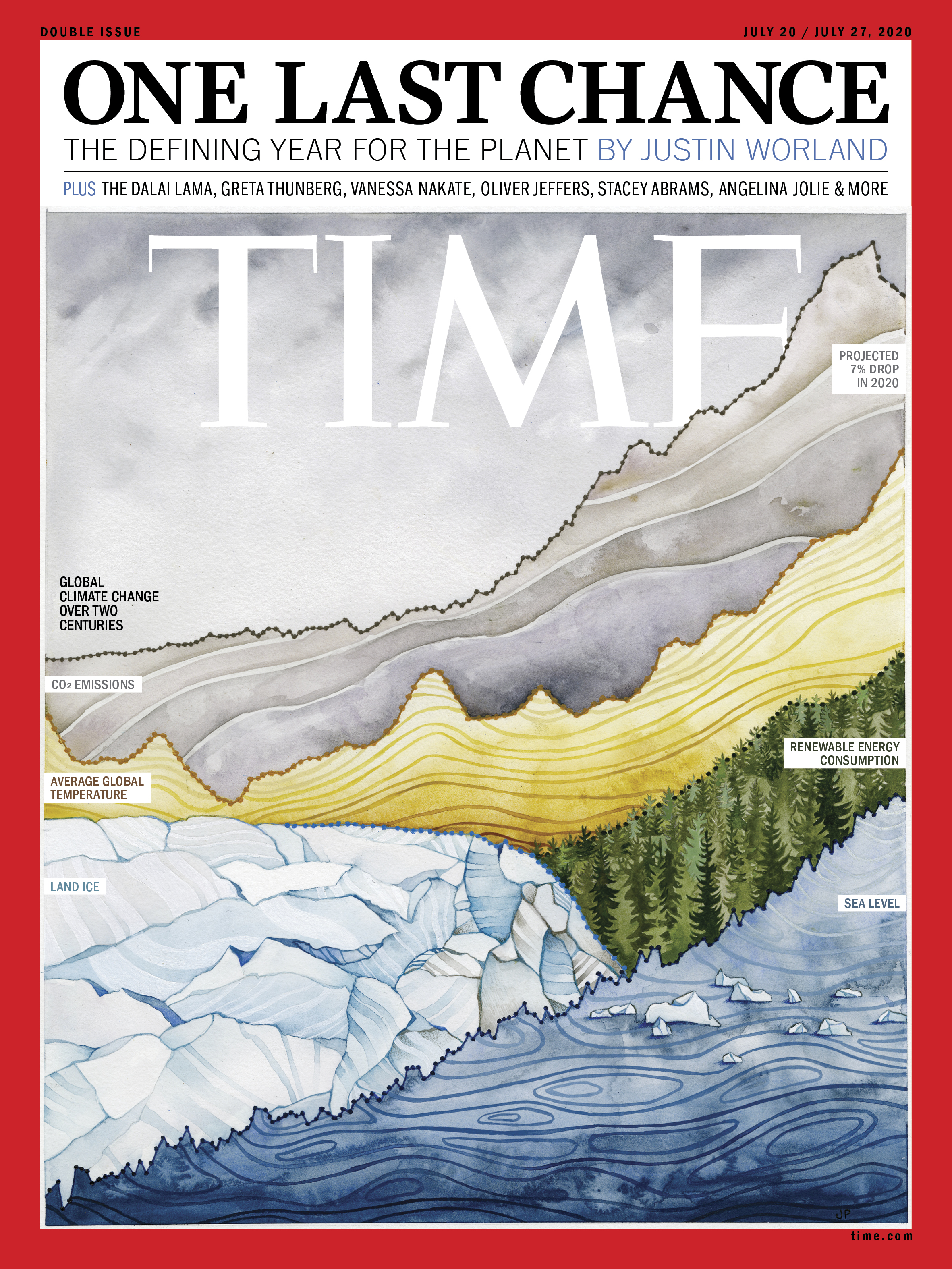
For this week’s special issue, “One Last Chance,” we turned the cover over to a young artist and scientist who painstakingly created a vibrant landscape of key global climate change indicators.
Maine artist Jill Pelto, 27, who incorporates scientific research and data into her watercolor paintings, often in the field, weaves visual narratives that reveal the benefits and costs of human impacts on this planet.
“It has been a tumultuous year, but underlying currents of positive action are surfacing rapidly,” says Pelto, whose watercolor and colored pencil piece is titled Currents. “It depicts a critical grouping of global climate data dictating our present and future action. The reality of this data may be frightening, but there are messages for hope within.”
“This year, the impact of the novel coronavirus will lead to a reduction in global CO2 emissions, and renewable energy consumption will continue to increase,” adds Pelto, who holds bachelor’s degrees in both Studio Art and Earth and Climate Sciences from the University of Maine. “It is critical we leverage these trajectories as a sign of our collective potential to support local environmental action for global change today. This includes addressing the disproportionate effects of climate change on marginalized peoples.”

The cover image incorporates global data on CO2 emissions (1880-present), including the projected drop due to COVID-19, average global temperatures (1880-present), renewable energy consumption (1965-present), land ice volume (1960-present) and sea level rise (1880-present).
“The title Currents refers to time and change. The currents in our world’s oceans are literally shifting as our climate changes,“ says Pelto, whose father, Mauri Pelto, is a glaciologist and professor at Nichols College in Massachusetts. At 16, Jill started working with her father in the North Cascade Glaciers of Washington state, measuring and tracking the changes in glacier depths.
Jill Pelto’s work has been recognized in Smithsonian, PBS NewsHour, and National Geographic, and is also being used in K-12 curriculum programs across the U.S. and Canada. Recently, she has exhibited in Maine, New Mexico, and New York.
“As both an artist and a science communicator, I’m empowered by interdisciplinary approaches to share environmental science with new audiences. This process involves starting dialogues with scientists about the importance of their work,” said Pelto, whose M.S. focused on studying the stability of the Antarctic Ice Sheet in a warming world. “I hope that my art encourages audiences to connect with science in ways that are emotionally relevant. Art is a powerful platform to ground climate change discussion in everyday life and culture.”
Cover data sources: C02 emissions and sea levels from NOAA; renewable energy from ourworldindata.org; temperatures from NASA; land ice from IMBIE and Nature.
More Must-Reads from TIME
- Cybersecurity Experts Are Sounding the Alarm on DOGE
- Meet the 2025 Women of the Year
- The Harsh Truth About Disability Inclusion
- Why Do More Young Adults Have Cancer?
- Colman Domingo Leads With Radical Love
- How to Get Better at Doing Things Alone
- Michelle Zauner Stares Down the Darkness
Contact us at letters@time.com